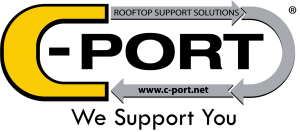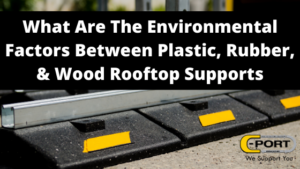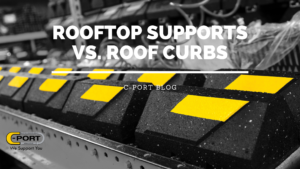How Do Rubber Pipe Supports Stand Up in Extreme Heat?...
Read More5 Pros (and 2 Cons) of TPO Roofing
Some Backstory…
TPO Roofing falls under the single-ply membrane roofing category. Single-ply membranes are sheets of rubber and other synthetics that can be mechanically fastened, ballasted or chemically adhered to insulation creating a layer of protection on your commercial facility.
TPO has been around for a few decades now. However, since the chemical formula has kept evolving, it has been getting more reliable. TPO is made from ethylene propylene rubber. It was designed to have the advantages of a rubber roof combined with hot air-weldable seams for extra durability.
There are two main types of single-ply membranes for commercial roofing: Thermoplastic Polyolefin (TPO) and Ethylene Propylene Diene Terpolymer (EPDM).

So why TPO for your roof?
One of the largest benefits to installing a TPO roof is the cost. TPO has one of the lowest price points for roofing material on the market, costing less then EPDM and other types of roller rubber roofing.
Another benefit of using TPO roofing is the color. TPO is white which gives it reflective characteristics. These characteristics help by reflecting sunlight away from the building therefor keeping the building cooler in warm months and in turn using less air conditioning. These energy savings also help lower the overall price point when you incorporate energy saving into the life of the roof cost.
The Pros of TPO
1. Its Cost Effective (At Least Compared To PVC)
TPO can be a desirable option because it has a relatively low price point. Compared to PVC, TPO offers comparable energy efficiency and ability to weld hot-air at a fraction of the cost of PVC.
2. Strength and Durability, Especially At The Seams
TPO would be considered a strong roofing product because of its ability to resist tears, punctures and dirt and mold build-up. On top of those features, TPO has the most flexibility when it comes to single-ply roofing membranes because it is able to deal with expansion and contraction of the building more efficiently then other materials. It allows for a wide array of options when it comes to moving or settling of a building.
As TPO membranes have hot air welded seams, its seam strength is three times stronger than conventional rubber roofs that use tape systems. It is also about six times stronger than those with glued seams. This is very beneficial when using rooftop supports that need to be fastened to the membrane. Check out our CGW rooftop pipe support HERE which works in conditions with wind uplift and seismic zones.
3. Energy Efficiency
TPO has UV resistant properties which eases cooling costs in warm months and climates. TPO not only meets, but exceeds the EPA Energy Star requirements. This means that in the Summer, TPO will help keep your energy bill low while simultaneously helping the environment and keeping your home cool. The energy efficiency of TPO will definitely have an impact on the overall cost of the roof once you factor in energy savings.
4. Installation
TPO weighs less than EPDM making it easier to maneuver and move around. TPO is synonymous with less labor time needed for an install compared to other roofing options. Less time working on a project results in significantly lower labor costs, which is just another area that TPO can save you money.
5. Adaptable To Various Home Styles
TPO comes in a variety of colors – Black, White, Grey – and with its strong level of UV-resistance, all colors of TPO can deliver energy savings for you. Having the ability to choose colors makes the membrane a little friendlier when designing a building or home. This may seem like a small detail but this gives architects the ability to still have a product that fits in both design and energy efficiency.
The Cons of TPO
1. Longevity
With TPO being the “new kid on the block” there are questions when it comes to its longevity. The chemical formula for TPO has been changed and tweaked over the past 30 years. This is typically for the better, however it is important to keep in mind that with these changes in the chemical formula, the verdict is still out for how well it hold up over the years.
2. Does Not Do Well When Subjected To High Heat
TPO roofing can save you a remarkable amount of money on your energy costs and make your home or office building cooler, but when the heat gets too high, it can cause serious problems. Southern states that are generally warmer over the course of the year than northern states have shown that this could be a concern. If temperatures are pushed to a tremendously high level on a regular basis or if solar loads are increased far beyond usual amounts, it is entirely possible TPO roofing could fail to withstand those conditions. So, if you live in a climate where those are issues you will regularly encounter, TPO roofing may not be your best option.
Clearline US Expansion
The 36,000 square foot former Henman Tool Facility Clearline Technologies...
Read MoreWhat Are The Environmental Factors Between Plastic, Rubber & Wood Rooftop Supports
What Are The Environmental Factors Between Plastic, Rubber & Wood...
Read MoreRooftop Supports vs. Roof Curbs
Throughout the history of construction, builders and property owners have not had many...
Read More



